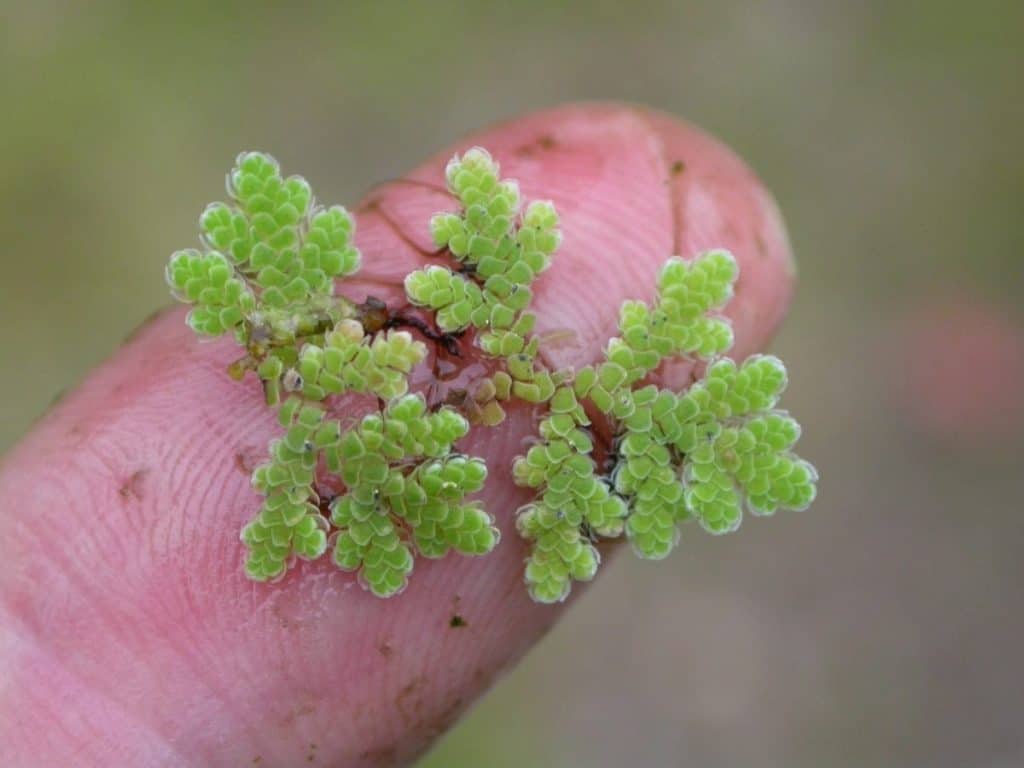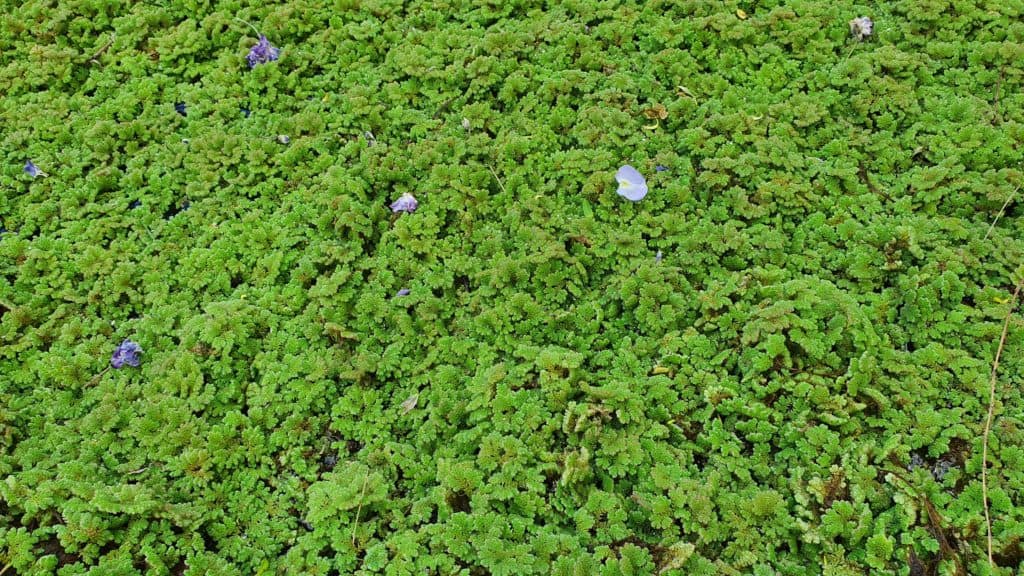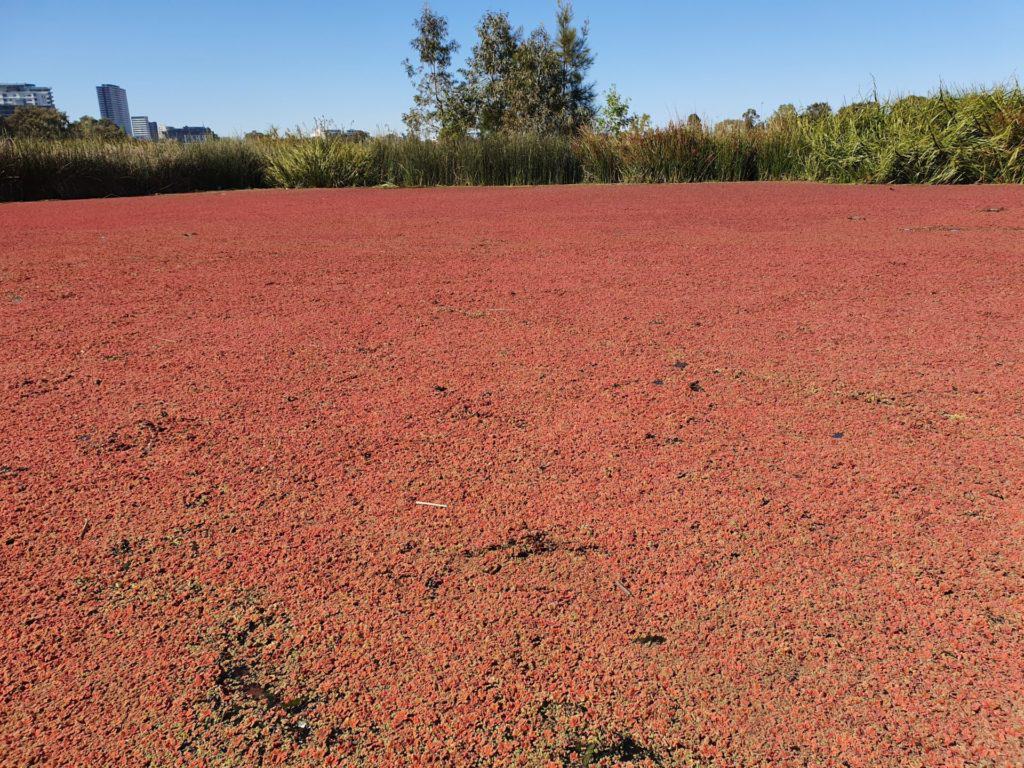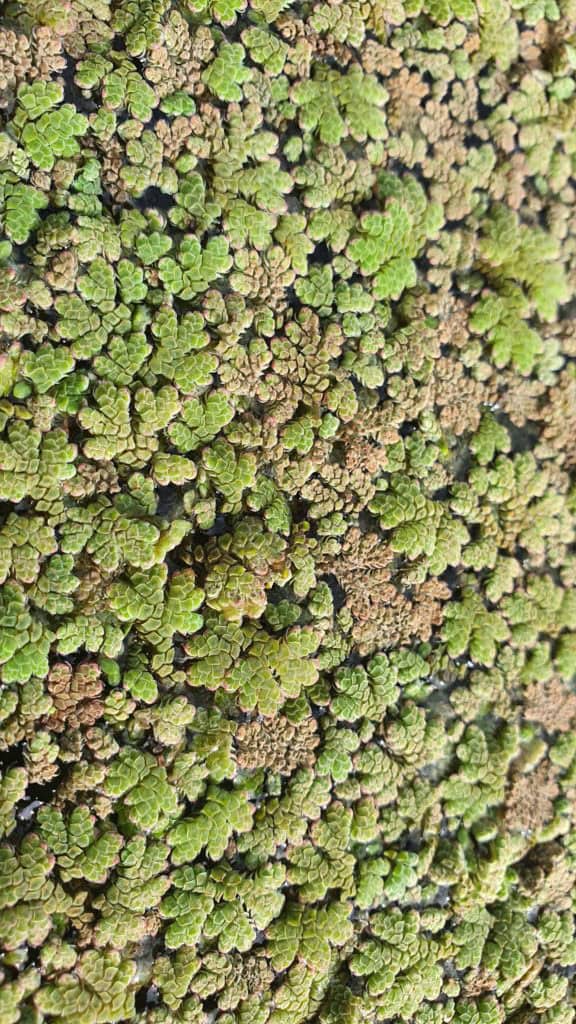Azolla – Red Water Fern
weed identification
Azolla filiculoides is a small, free floating freshwater fern, green to reddish-brown or purplish orange or red at the edges, branching freely, and breaking into smaller sections as it grows. The adult plant is approximately 25-35 mm long, with the length of the individual frond (“leaves”) being approximately 1-1.5 mm. Plants can change colour from green to brown and red as a result of changes in sunlight intensity (and shade) as well as ambient temperature.
Stationary and slow-moving water bodies, especially where nutrients are high. E.g. ornamental ponds, fish ponds, dams, irrigation dams.
It reproduces vegetatively (plant fragments) or by spores. Azolla filiculoides is able to undergo rapid vegetative reproduction throughout the year by the elongation and fragmentation of the small fronds. Under ideal conditions an infestation can double in area every 4-5 days.
It can be dispersed by attaching to animals such as water birds, turtles or livestock, human activity, floods or wind dispersal (spores).
They form a symbiotic relationship with the cyanobacterium Anabaena azollae, which fixes atmospheric nitrogen. The nitrogen-fixing capability of Azolla has led to widespread use as a bio fertiliser, especially in parts of Southeast Asia.
What does Azolla – Red Water Fern look like?
Disadvantages of Azolla – Red Water Fern
Full coverage of a pond or dam by Azolla can cause significant problems such as:
- Stopping oxygen diffusion
- Shades out all submerged vegetation preventing further growth and causing death
- Causes fish and other aquatic life death
- Provides breeding ground for mosquitos
- Changes the water chemistry to favour harmful algae and bacteria
- If left untreated, Azolla can render the water unusable and make treatment far more costly than if initially dealt with
treatment
Orange Oil – Designed to treat free floating organic matter. This treatment is best applied when 20% of the surface water is still visible, and is intended to be used over multiple treatments (day 1, 2 and 4).
AQ200 Aquatic Herbicide + Wetting Agent – Chemical Herbicide designed to kill free floating weeds quickly. Use on mild to severe infestations.
Aquatic Weed Skimmers – Physically remove free floating weeds. Use on mild infestations or to aid herbicide treatments.
Aquatic Harvesting – Large amphibious machine that clears the surface of floating aquatic weeds. Book this service for severe infestations or for larger water bodies.
prevention options
Surface Clear – Creates a protection barrier on the surface of the water to limit plant replication and new infestations forming. Use on its own or after herbicide treatments.
Aerating Fountains – Reduces the severity and likelihood of aquatic weed infestations. Use in any body of water.







